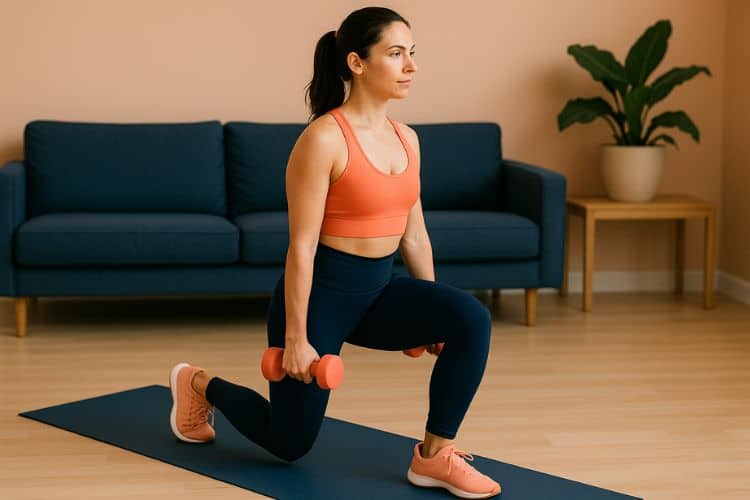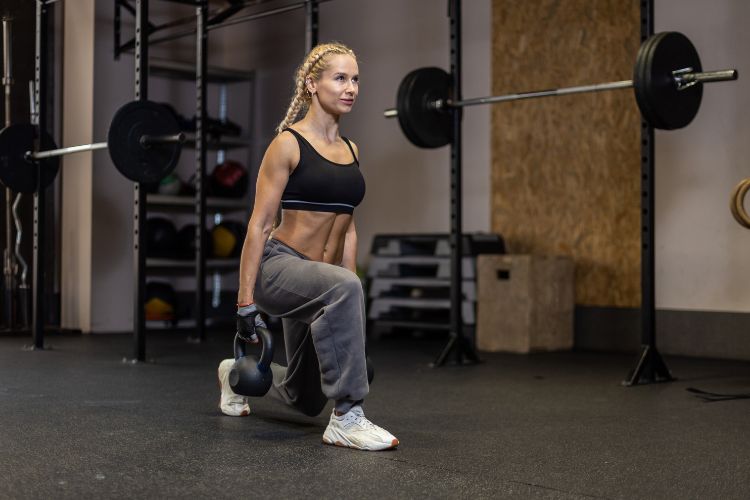Sign up for workout ideas, training advice, reviews of the latest gear and more.






If you’re short on time but want to build muscle, burn fat, and feel strong, 20-minute strength workouts are your answer. With the right approach, you can train your entire body efficiently and effectively without spending hours in the gym. Whether you’re a beginner, a busy professional, or looking to switch up your routine, short strength sessions can deliver serious results.
In this guide, we’ll cover everything you need to know about 20-minute strength training, including the best exercises, routines for different fitness levels, and how to maximize each session. Let’s dive in!
One of the biggest advantages of a 20-minute workout is how easily it fits into a busy lifestyle. With just 20 minutes a day, you can activate all major muscle groups, stimulate muscle growth, and improve overall strength.
Strength training doesn’t just build muscle—it also burns calories, boosts metabolism, and promotes post-exercise oxygen consumption (EPOC), meaning you continue to burn calories long after your workout ends.
Many 20-minute routines can be done at home using dumbbells, resistance bands, kettlebells, or just bodyweight. That makes them accessible and budget-friendly.
Before diving into a strength workout, make sure you have:
Since time is limited, focus on compound exercises that work multiple muscle groups at once—like squats, push-ups, and rows. These deliver more bang for your buck than isolation movements.
To keep your heart rate up and your muscles engaged, rest no more than 30–45 seconds between sets. This keeps the intensity high and adds a mild cardio element to the workout.
While moving quickly through sets may seem time-efficient, sacrificing form increases your risk of injury. Focus on controlled, proper movement patterns throughout each rep.
Goal: Build foundational strength and proper form using bodyweight only.
Repeat the following circuit 2–3 times. Rest 30 seconds between exercises.
Cool down with 2–3 minutes of stretching (hamstrings, quads, chest, and shoulders).
Goal: Increase muscle strength and endurance with added resistance.
Perform 3 rounds. Rest 30 seconds between sets. Use moderate-weight dumbbells.
Stretch post-workout to reduce tightness and promote flexibility.
Goal: Maximize muscle activation with high intensity and short rest.
Perform 4 rounds. Use challenging weights and keep rest to 20–30 seconds.
This is a fast-paced, high-output routine ideal for experienced lifters.
If you want to train different muscle groups across the week in 20-minute sessions, try these splits:
This is great for people with limited days to train. Each session hits every major muscle group using compound moves.
To see continuous progress, gradually increase the weight, reps, or intensity over time. This is essential for muscle growth and strength gains.
Don’t neglect recovery. Get 7–9 hours of sleep, eat plenty of protein, and take rest days as needed to allow your muscles to repair and grow.
Pairing two exercises back-to-back—like push-ups and rows or squats and lunges—can boost efficiency and intensity in a short timeframe.
Use a journal or fitness app to record weights, reps, and sets. Tracking helps you stay motivated and ensures progressive improvement.
While you can do plenty with bodyweight alone, having a few tools can increase variety and effectiveness:
Here’s a full week of 20-minute workouts you can repeat for 4–6 weeks:
Monday – Full-Body Strength (Dumbbells)
Tuesday – Core + Lower Body (Bodyweight)
Wednesday – Rest or Active Recovery (Yoga, Light Walking)
Thursday – Upper Body Strength (Dumbbells or Resistance Bands)
Friday – Total Body Circuit (Kettlebell or Superset)
Saturday – Core and Stability (Planks, Bridges, Twists)
Sunday – Rest or Stretching Session
Avoid starting with weights that compromise your form. Build up gradually to avoid injuries.
Even in a short session, warming up your joints and cooling down your muscles is critical to avoid strains.
Sticking with light weights for too long stalls progress. Be mindful to increase resistance when your current load feels too easy.
Muscle is metabolically active tissue, meaning you burn more calories even at rest when you strength train regularly.
Even short sessions contribute to hypertrophy (muscle growth), especially when you train consistently.
Strengthening the muscles around your joints improves stability and reduces injury risk.
Strength workouts trigger endorphins, helping you feel focused, motivated, and mentally sharp.
Absolutely. While longer sessions can be beneficial, consistency, intensity, and progressive overload are more important than duration. A well-structured 20-minute plan can help you build noticeable muscle.
It depends. You can train every day if you vary the muscle groups (split routines) or focus on different movement patterns. However, rest and recovery are key, so most people benefit from 3–5 strength sessions per week.
No, but you may benefit from protein powder, creatine, or BCAAs if you’re training intensely and want to support recovery. Always prioritize whole foods first.
You don’t need long workouts to see big results. 20-minute strength workouts can reshape your body, improve muscle tone, and elevate your health—all while fitting into your busiest days. With smart planning, dedication, and progression, you can build a strong, resilient physique in less time than it takes to watch a TV show.
So grab your dumbbells, set your timer, and get ready to transform your fitness—20 minutes at a time.
Want more workout and video guide?
Follow us on Pinterest, Facebook, and Subscribe to our Newsletter and Stay tuned for FREE downloads of our App coming soon!
Stay up to date on the latest women’s health, fitness and lifestyle trends and tips.